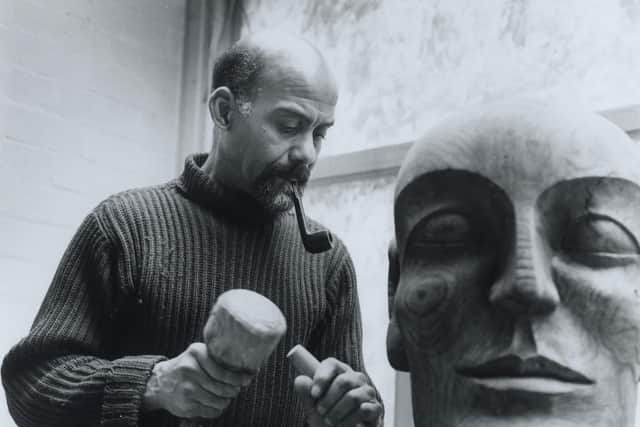Ronald Moody: The former dentist who became a renowned self-taught wood carver
He was a self-taught wood carver from Jamaica who began his career as a dentist, but who became a prominent artist on the world stage.
Now The Hepworth in Wakefield is preparing an exhibition to honour Ronald Moody (1900-1984). Sculpting Life will be on show from June 22 to November 3.
Advertisement
Hide AdAdvertisement
Hide AdIt will be the first major exhibition devoted to Moody. Sculpting Life will explore the development of his art and his significant place within British and international art history. On display will be more than 50 sculptures and paintings by Moody, together with never-before-seen archival material and works by Moody’s peers including Jacob Epstein, Elizabeth Frink, Dame Barbara Hepworth, Edna Manley and Henry Moore.


Special loans from the British Museum of ancient artefacts that were of significant inspiration to Moody, as well as to Hepworth and Moore, will also be shown.
Moody was born in Kingston, Jamaica, and moved to London in 1923 to study dentistry. He was inspired by visits to the British Museum, particularly the Egyptian art and artefacts, to leave dentistry and become a sculptor, teaching himself to model and then carve, primarily in wood.
Despite his unconventional path into sculpting, Moody went on to become one of the most important artists of the 20th century and was awarded Jamaica’s prestigious Musgrove Gold Medal in 1977 and the Minority Arts Advisory Service (MAAS) Award in 1980. His work is in major public collections around the world, including Wakefield’s art collection.
Advertisement
Hide AdAdvertisement
Hide AdThe exhibition is curated by Moody specialist Ego Ahaiwe Sowinski with The Hepworth Wakefield’s Senior Curator, Eleanor Clayton, and will reveal extensive new research into the artist’s life and career. Arranged chronologically, the first section of the exhibition will present major sculptures from Moody’s early successful exhibitions in Europe and America in the 1930s such as Johanaan (1936), L’Homme (1937) and Midonz (1937).
Having previously worked mostly in wood and bronze, after the Second World War, Moody experimented with concrete and resin casting. These figurative sculptures from the 1950s and 60s will be presented alongside the many portraits he sculpted throughout his career, which reveal a fascinating network of political activists, actors, artists and writers, as well as friends and family.
This segment of the exhibition will also include The Unknown Political Prisoner (1952) — Moody’s entry to the international sculpture competition organised by the Institute of Contemporary Art in the early 1950s — which will be on display for the first time since 1965.
Ms Clayton, Senior Curator at The Hepworth Wakefield said: “Ronald Moody was one of the most significant artists of the 20th century and a highly influential member of the diasporic community, yet, this exhibition and accompanying book will be the first major exploration of Moody’s long and celebrated career.
Advertisement
Hide AdAdvertisement
Hide Ad"Through this important exhibition, we will bring a broader understanding of Moody’s work and impact on British art. My co-curator Ego Ahaiwe Sowinski has spent years researching Moody in the archive material organised and preserved by the artist’s niece Cynthia Moody held in Tate Archive and related collections, enabling us to provide unprecedented insight into Moody’s extensive creative networks, interests and fascinating life.”
To coincide with the exhibition, Thames & Hudson will publish the first major book on the artist, Ronald Moody: Sculpting Life, by Ego Ahaiwe Sowinski, edited and with an introduction by Eleanor Clayton and a foreword by Paul Dash.
Comment Guidelines
National World encourages reader discussion on our stories. User feedback, insights and back-and-forth exchanges add a rich layer of context to reporting. Please review our Community Guidelines before commenting.
